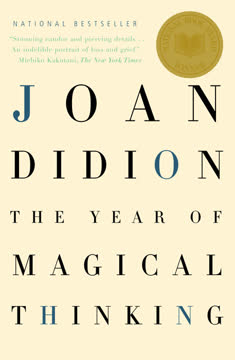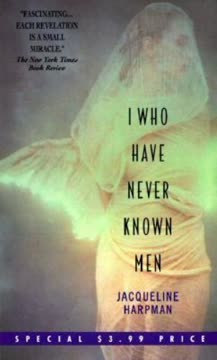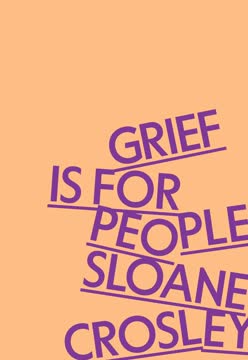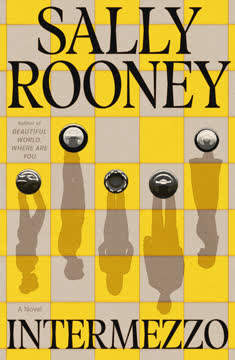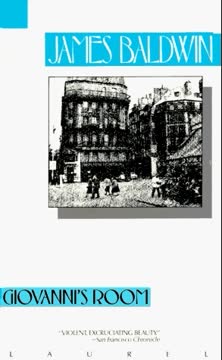Key Takeaways
1. Life's Unthinkable Changes Arrive in Ordinary Moments
Life changes in the instant.
Sudden Disruption. The book opens with the stark realization that life can irrevocably alter in an instant, during the most mundane of circumstances. This theme underscores the fragility of existence and the unpredictable nature of tragedy. The author emphasizes how the "ordinary nature of everything preceding the event" makes it difficult to accept the unthinkable.
Shared Experience. The author draws parallels between her experience and those of others facing sudden disaster, such as survivors of Pearl Harbor or 9/11. These comparisons highlight a universal human tendency to focus on the unremarkable circumstances surrounding catastrophic events, seeking a sense of normalcy amidst chaos.
The Aftermath. The immediate aftermath of loss is characterized by shock and a focus on practicalities. The author describes the blur of activity, the influx of support from friends and family, and the struggle to reconcile the present reality with the recent past. This initial period is marked by a sense of unreality and a desperate attempt to maintain control.
2. Grief Shatters Fixed Ideas About Life and Death
This is my attempt to make sense of the period that followed, weeks and then months that cut loose any fixed idea I had ever had about death, about illness, about probability and luck, about good fortune and bad, about marriage and children and memory, about grief, about the ways in which people do and do not deal with the fact that life ends, about the shallowness of sanity, about life itself.
Re-evaluating Beliefs. The sudden loss forces a re-evaluation of fundamental beliefs about death, illness, and the nature of existence. The author grapples with the randomness of fate, the illusion of control, and the limitations of human understanding in the face of profound loss.
Challenging Assumptions. Grief exposes the inadequacy of conventional wisdom and societal expectations surrounding death. The author questions the shallowness of sanity and the ways in which people do and do not deal with the fact that life ends. This questioning leads to a deeper exploration of the human condition and the search for meaning in the face of mortality.
The Personal and the Universal. The author's personal journey becomes a lens through which to examine universal themes of love, loss, and the human capacity for resilience. By sharing her experiences, she offers a starting point for navigating the wilderness of grief and finding solace in shared humanity.
3. Magical Thinking Emerges as a Coping Mechanism
This was the beginning of my year of magical thinking.
Irrational Beliefs. In the wake of loss, the author finds herself engaging in "magical thinking," a primitive form of reasoning in which thoughts or wishes are believed to have the power to alter reality. This disordered thinking manifests in various ways, such as believing that keeping the deceased's clothes will facilitate their return or that authorizing an autopsy could somehow reverse the death.
Seeking Control. Magical thinking provides a sense of control in a situation that feels utterly uncontrollable. By clinging to irrational beliefs, the author attempts to rewrite the narrative, change the outcome, and defy the finality of death. This behavior is a manifestation of the human need to make sense of the senseless and to exert agency in the face of overwhelming powerlessness.
Covert Derangement. The author recognizes that her magical thinking is a form of derangement, but it remains largely covert, hidden even from herself. This underscores the subtle and insidious nature of grief, which can warp perception and distort reality without being readily apparent to others.
4. Mourning Requires Attention and Active Engagement
We rely instead on “its being overcome after a certain lapse of time.”
Beyond Passive Grief. The author distinguishes between grief, a passive experience of sorrow, and mourning, an active process of engaging with that grief. While grief happens, mourning requires attention, effort, and a willingness to confront the pain of loss.
The Work of Mourning. The author turns to literature, psychology, and even etiquette manuals in search of guidance on how to navigate the complexities of mourning. She learns about the physiological and psychological effects of grief, the importance of ritual, and the societal pressures to hide or suppress mourning.
Challenging Societal Norms. The author questions the modern tendency to treat mourning as morbid self-indulgence and to admire those who hide their grief. She advocates for a more open and accepting approach to mourning, one that acknowledges the profound impact of loss and allows for the expression of grief without judgment.
5. Memory Becomes a Minefield of Loss and Longing
The way you got sideswiped was by going back.
Triggering Associations. The author finds that everyday experiences and familiar places become minefields of painful memories, triggering intense feelings of loss and longing. These associations can be unexpected and overwhelming, disrupting the present moment and plunging the author back into the depths of grief.
The Vortex Effect. The author describes a "vortex effect," in which seemingly innocuous details can unleash a flood of memories and emotions, drawing her into a spiral of grief. This phenomenon highlights the power of memory to evoke the past and the difficulty of escaping the grip of loss.
Navigating the Past. The author grapples with the challenge of navigating the past without being consumed by it. She recognizes the need to avoid certain places and activities that are too closely associated with the deceased, while also finding ways to honor and remember the love and joy that were shared.
6. The Vortex Effect: Associations Trigger Painful Memories
The way you got sideswiped was by going back.
Unavoidable Triggers. The author finds that even seemingly innocuous places and objects can trigger a flood of painful memories, creating a "vortex effect" that pulls her back into the depths of grief. These triggers can be unexpected and overwhelming, disrupting the present moment and making it difficult to move forward.
Examples of Triggers:
- Familiar songs
- Shared jokes
- Favorite restaurants
- Specific dates or anniversaries
Managing the Vortex: The author develops strategies for managing the vortex effect, such as avoiding certain places, limiting exposure to certain stimuli, and consciously redirecting her thoughts. However, she acknowledges that these strategies are not always effective and that the pain of loss can resurface at any time.
7. The Illusion of Control Collides with Reality
Information was control.
The Need for Answers. The author, a writer accustomed to gathering information and controlling narratives, struggles with the lack of answers surrounding her husband's death and her daughter's illness. She seeks to understand the medical details, the sequence of events, and the underlying causes, believing that knowledge will provide a sense of control.
The Limits of Knowledge. The author confronts the limitations of human understanding and the impossibility of fully comprehending the mysteries of life and death. She realizes that some events are simply beyond her ability to control or manage, and that the search for answers can be a futile and even harmful pursuit.
Acceptance and Surrender. The author gradually learns to relinquish her need for control and to accept the uncertainty and ambiguity of her situation. This surrender is a crucial step in the mourning process, allowing her to move beyond the illusion of control and embrace the reality of her loss.
8. Grief Exposes Fragility and the Need for Connection
People who have recently lost someone have a certain look, recognizable maybe only to those who have seen that look on their own faces.
Vulnerability and Exposure. The author describes a sense of extreme vulnerability and exposure in the wake of loss, as if she has become invisible to the world. This feeling of nakedness underscores the profound impact of grief on the self and the need for protection and support.
The Importance of Connection. The author finds solace in the presence of friends and family, who offer comfort, companionship, and a sense of normalcy. She recognizes the importance of human connection in navigating the isolation and loneliness of grief.
The Limits of Empathy. The author also encounters individuals who are unable to fully understand or empathize with her experience, highlighting the limitations of human connection and the unique burden of grief. This underscores the importance of finding support from those who have experienced similar losses.
9. The Search for Meaning in a World Without End
As it was in the beginning, is now and ever shall be, world without end.
Questioning Beliefs. The author grapples with fundamental questions about the nature of existence, the meaning of life, and the possibility of an afterlife. She re-examines her childhood beliefs, her understanding of religion, and her relationship to the natural world.
Finding Solace in Ritual. The author finds comfort in the repeated rituals of daily life, such as setting the table, lighting candles, and building a fire. These actions provide a sense of order and continuity in a world that feels chaotic and unpredictable.
Embracing Impermanence. The author finds meaning in the vast indifference of geology and the constant changing of the earth. This perspective allows her to accept the impermanence of life and to find peace in the knowledge that everything is in a state of flux.
10. The Permanent Impassibility of the Divide
There was a divide.
The Finality of Death. The author confronts the stark reality of death and the permanent separation it creates between the living and the dead. She recognizes that there is no going back, no reversing time, and no escaping the finality of loss.
The Absence of Response. The author grapples with the absence of her husband's voice, his opinions, and his presence in her life. She realizes that the conversations, the shared experiences, and the unspoken understanding that defined their relationship are now gone forever.
Acceptance and Remembrance. The author gradually learns to accept the permanent impassibility of the divide and to find ways to honor and remember her husband without clinging to the illusion of his return. This acceptance is a testament to the enduring power of love and the human capacity for resilience in the face of profound loss.
Last updated:
FAQ
1. What is "The Year of Magical Thinking" by Joan Didion about?
- Personal account of grief: The book is a memoir chronicling Joan Didion’s experience of grief following the sudden death of her husband, John Gregory Dunne, and the simultaneous illness of their daughter, Quintana.
- Exploration of mourning: Didion examines the psychological and emotional processes of mourning, including her own “magical thinking”—the irrational belief that her husband might return.
- Intertwined crises: The narrative weaves together the story of her husband’s death with her daughter’s life-threatening illness, highlighting the compounding nature of loss.
- Search for meaning: Didion uses literature, medical research, and personal memory to try to make sense of her loss and the nature of grief.
2. Why should I read "The Year of Magical Thinking" by Joan Didion?
- Universal experience of loss: The book offers a raw, honest look at grief, which is a universal human experience, making it relatable to anyone who has lost a loved one or fears such loss.
- Masterful writing: Didion’s prose is acclaimed for its clarity, precision, and emotional depth, providing both literary beauty and emotional resonance.
- Insight into coping mechanisms: The memoir provides insight into the ways people try to cope with trauma, including denial, ritual, and the search for control.
- Critical acclaim: The book has been widely praised for its honesty and eloquence, and is considered a modern classic in memoir and grief literature.
3. What are the key takeaways from "The Year of Magical Thinking" by Joan Didion?
- Grief is unpredictable: Grief does not follow a linear or predictable path; it can be disorienting, irrational, and physically disruptive.
- Magical thinking is common: Didion’s experience of “magical thinking”—believing her husband might return or that her actions could reverse his death—is a natural, if irrational, part of mourning.
- Rituals and routines matter: The importance of rituals, routines, and practical tasks in the aftermath of loss is highlighted as a way to maintain a sense of control.
- No easy resolution: The book emphasizes that there is no simple “healing” or closure; the absence and meaninglessness can persist long after the loss.
4. How does Joan Didion define "magical thinking" in "The Year of Magical Thinking"?
- Irrational beliefs after loss: Magical thinking refers to Didion’s irrational belief that her husband might come back, or that certain actions (like not giving away his shoes) could affect reality.
- Denial as a coping mechanism: It is a form of denial, a way to avoid accepting the finality of death.
- Common in grief: Didion notes that this kind of thinking is not unique to her, but is a common psychological response among the bereaved.
- Examples in daily life: She provides concrete examples, such as not wanting to give away her husband’s shoes because he would need them if he returned.
5. What is unique about Joan Didion’s approach to grief in "The Year of Magical Thinking"?
- Intellectual and emotional analysis: Didion combines rigorous intellectual analysis with raw emotional honesty, using literature, psychiatry, and personal memory to dissect her grief.
- Focus on the ordinary instant: She emphasizes the “ordinary instant” in which life changes, highlighting how trauma often occurs amid routine.
- Self-scrutiny: Didion turns her characteristic journalistic scrutiny inward, examining her own thoughts, behaviors, and irrationalities.
- Avoidance of sentimentality: The memoir is unsentimental and avoids clichés about healing, instead presenting grief as complex and unresolved.
6. How does "The Year of Magical Thinking" by Joan Didion explore the relationship between grief and memory?
- Memory as both comfort and pain: Didion’s memories of her husband and their life together are a source of both solace and acute pain.
- Vortex effect: She describes the “vortex effect,” where one memory triggers a cascade of others, often leading to emotional overwhelm.
- Selective and unreliable memory: The book discusses how memory can be “mudgy” or spotty, especially under the stress of trauma.
- Preservation and loss: Didion grapples with the fear that memories will fade, and the tension between holding on and letting go.
7. What role does literature, research, and ritual play in "The Year of Magical Thinking" by Joan Didion?
- Literature as a guide: Didion turns to poetry, novels, and grief literature (like C.S. Lewis’s "A Grief Observed") to find language and frameworks for her experience.
- Medical and psychological research: She consults medical texts and psychiatric studies to understand the physiological and psychological effects of grief.
- Rituals for control: Rituals—such as funerals, giving away clothes, and daily routines—are depicted as attempts to impose order and meaning on chaos.
- Limits of knowledge: Despite her research, Didion acknowledges that intellectual understanding cannot fully resolve or explain the emotional reality of loss.
8. How does Joan Didion describe her marriage and partnership in "The Year of Magical Thinking"?
- Deep interdependence: Didion and her husband, John Gregory Dunne, shared a close, interdependent relationship, both personally and professionally.
- Constant communication: Their days were filled with conversation, collaboration, and mutual trust, with little separation between their lives.
- Not competitive: Contrary to public assumptions, their marriage was not marked by professional rivalry but by mutual support.
- Marriage as memory and time: Didion reflects on marriage as a shared history and a denial of time, making the loss even more profound.
9. How does "The Year of Magical Thinking" by Joan Didion address the simultaneous illness of her daughter, Quintana?
- Compounded trauma: Didion’s grief over her husband’s death is compounded by the critical illness and repeated hospitalizations of her daughter, Quintana.
- Shifting focus: The narrative alternates between Didion’s mourning and her efforts to care for and advocate for Quintana.
- Uncertainty and helplessness: The unpredictability of Quintana’s condition intensifies Didion’s sense of helplessness and loss of control.
- Impact on mourning: The need to focus on Quintana’s survival delays and complicates Didion’s ability to process her husband’s death.
10. What are the most powerful quotes from "The Year of Magical Thinking" by Joan Didion and what do they mean?
- “Life changes fast. Life changes in the instant. You sit down to dinner and life as you know it ends.” This opening line encapsulates the suddenness and unpredictability of loss.
- “The ordinary instant.” Didion emphasizes how trauma often occurs amid the mundane, making it harder to comprehend.
- “I needed to be alone so that he could come back. This was the beginning of my year of magical thinking.” This quote illustrates the irrational hope and denial that characterize early grief.
- “Grief turns out to be a place none of us know until we reach it.” Didion highlights the uniqueness and unpredictability of each person’s experience of grief.
11. How does "The Year of Magical Thinking" by Joan Didion challenge common assumptions about grief and mourning?
- Rejects linear healing: Didion disputes the idea that grief follows a predictable, linear path toward healing or closure.
- Questions “strength” and “moving on”: The book challenges the expectation that the bereaved should be “strong” or quickly return to normal life.
- Exposes hidden suffering: Didion reveals the private, often invisible aspects of grief, including cognitive deficits, irrational thoughts, and physical symptoms.
- No easy answers: She resists offering platitudes or easy solutions, instead presenting grief as an ongoing, unresolved process.
12. What is the lasting impact and legacy of "The Year of Magical Thinking" by Joan Didion?
- Modern classic on grief: The book is widely regarded as one of the most important and influential works on mourning and loss in contemporary literature.
- Cultural conversation: It has shaped public discourse about grief, making it more acceptable to discuss the complexities and irrationalities of mourning.
- Adaptations and influence: The memoir was adapted into a successful Broadway play, further extending its reach and impact.
- Personal and universal resonance: Didion’s deeply personal account has resonated with countless readers, offering validation and companionship in the experience of loss.
Review Summary
The Year of Magical Thinking chronicles Joan Didion's grief following her husband's death and daughter's illness. Critics praise Didion's candid exploration of loss, describing the memoir as powerful and insightful. Some readers find her writing detached or overly intellectual, while others appreciate her analytical approach to grief. The book's portrayal of privilege and name-dropping bothers some, but many find it a moving and relatable account of mourning. Didion's precise prose and unflinching examination of her emotional state resonate with readers who have experienced loss.
Similar Books
Download PDF
Download EPUB
.epub digital book format is ideal for reading ebooks on phones, tablets, and e-readers.
